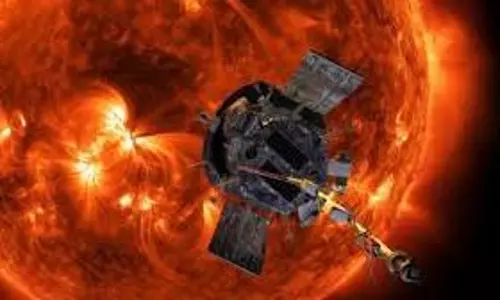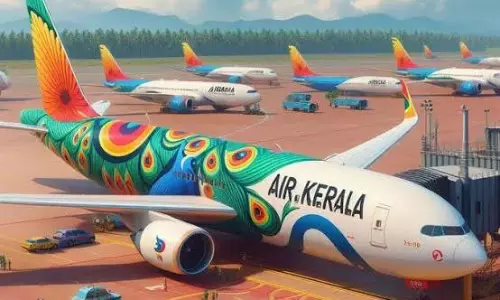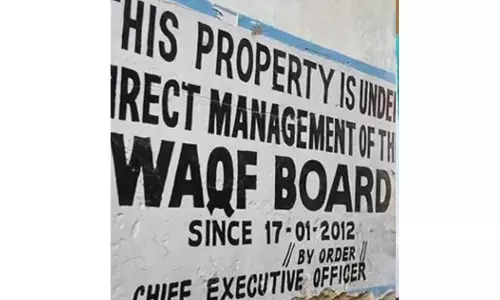
Setting Rs8 lakh annual income criteria for EWS rational, constitutional: Centre
text_fieldsNew Delhi: In an affidavit filed in the Supreme Court by the Ministry of Social Justice and Empowerment, the Centre on Tuesday justified its decision of setting Rs 8 lakhs as the annual income benchmark for determining the Economically Weaker Sections (EWS) category for reservation.
It said the principle of fixing the amount is rational and in line with Articles 14, 15 and 16 of the Constitution. The Centre was responding to the top court's enquiry on October 21 whether it would like to revisit the eight lakh annual income benchmark fixed for determining the EWS category for reservation in NEET admissions for medical courses.
"The exercise conducted to determine the creamy layer for the purpose of OBC reservation would be equally applicable for the determination of EWS category since the fundamental premise is that if a person/his family have a substantial economic standing, he/she may not require the benefits of reservation at the cost of others. It is reiterated that even the Major General Sinho Commission had suggested that, "extending the existing criteria to identify 'creamy layer' among OBCs could well serve as to decide the upper limit or as a criterion for identifying EBC families among General Category too," the affidavit said. The UPA government constituted the Major Gen (retd) SR Sinho Commission in 2010. It recommended welfare measures for the EWS category. The criteria for determining the category was arrived at after due deliberation with all concerned stakeholders, said the ministry.
"Even before the Office Memorandum dated January 17, 2019, was in existence in the context of identification of Economically Backward Classes (EBC), the Government had set up the Major General Sinho Commission in the year 2005. This Commission had by its report of July 2010, arrived at various conclusions, including the criteria to identify 'creamy layer' amongst OBC's which could well serve as a basis to decide the upper limit or as a criterion for identifying EBC families amongst the General Category as well. Alternatively, the Commission recommended that BPL families from the General Category whose annual family income from all sources is below the taxable limit (as may be revised from time to time) may be identified as EBCs," the affidavit said. The Centre further submitted that the income tax limit of Rs 1 lakh has been raised from time to time. This has been done on the basis of the cost of living, and at present, it stands at Rs 8 lakh per annum.
"In the year 2016, the upper-income limit for determination of Creamy Layer in respect of OBCs was Rs 6 lakhs per annum. In order to maintain the same, it was adjusted to Rs 8 lakhs on the basis of the Consumer Price Index. As the CPI had increased from 197 (December 2011) to 268 (March 2016), the multiplier was 1.36. Therefore to maintain the same standard of living, the income limit of Rs 6 lakh was multiplied with 1.36 to arrive at 8.16 lakhs which was rounded off to Rs 8 lakhs," the Centre submitted.
"Once such an exercise had already been done, the Government of India has adopted the same financial criteria. It is reiterated that although the Sinho Commission Report is one of the aspects taken into consideration while arriving at a policy decision to provide reservation to EWS of the society, the income criteria now fixed are not on the sole basis of the Major General Sinho Commission Report," the affidavit stated. It further added that the determination of the EWS category as per the Office Memorandum dated January 17, 2019, is not overinclusive and need not be tampered with.
"The fixation of eight lakh as income criteria is on the basis of the criteria detailed in the affidavit after taking into consideration the criteria for determining the creamy layer of OBCs. Further, even the Major General Sinho Commission had recognised that the very same test can also be applied for EWS. To provide further checks so as to ensure that only the needy get the benefit of Article 15(6) and Article 16(6) reservations, the office memorandum dated January 17, 2019, provides further exclusions," the affidavit said.
Until the Supreme Court decides to challenge the 27 per cent reservation for OBC and 10 per cent for the EWS category in PG all India quota seats from the current academic session, the counselling process of NEET-PG would not commence, the Centre clarified.
The top court was hearing a batch of pleas challenging the Centre and Medical Counselling Committee (MCC) July 29 notice providing 27 per cent reservation for Other Backward Class (OBC) and 10 per cent for EWS category in the National Eligibility cum Entrance Test (NEET) admissions for medical courses.























